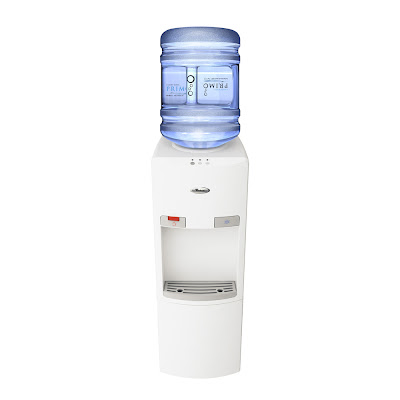Weight of Water
 Anyone that has ever tried to change one of the large bottles of water on top of an office water cooler (pictured to the left) knows that the weight of water can be very heavy. If you found this website while looking to find out exactly what that water weighed then you've come to the right place.
Anyone that has ever tried to change one of the large bottles of water on top of an office water cooler (pictured to the left) knows that the weight of water can be very heavy. If you found this website while looking to find out exactly what that water weighed then you've come to the right place.For a straightforward look at exactly what water weighs take a look at the chart below that breaks up both metric (centimeters, liters, grams, and kilograms) and US customary system (inches, feet, gallons and pounds) weights for various volumes of water.
(click to enlarge)

When seeing the above weight of water chart for the first time one of the first things most people notice (after all of the confusing decimal points) is that a cubic centimeter of water weighs exactly one gram. This is of course no coincidence as the definition of a gram is such that it is equal to the weight of one cubic centimeter of water.
In terms of understanding how these numbers relate to every day encounters with water here are a few ways to think about the data presented above.
A plastic gallon of "bottled" water that can be picked up at most any grocery store weighs about 8.35 pounds (excluding the plastic container). A gallon of milk weighs more than a gallon of water because of density. The topic of density of various liquids is beyond the scope of this explanation but we will say that it is interesting to know that a gallon of skim milk weighs more than a gallon of whole milk because fat weighs less than water and whole milk has more fat and skim milk has more water - food for thought.
In terms of understanding how these numbers relate to every day encounters with water here are a few ways to think about the data presented above.
A plastic gallon of "bottled" water that can be picked up at most any grocery store weighs about 8.35 pounds (excluding the plastic container). A gallon of milk weighs more than a gallon of water because of density. The topic of density of various liquids is beyond the scope of this explanation but we will say that it is interesting to know that a gallon of skim milk weighs more than a gallon of whole milk because fat weighs less than water and whole milk has more fat and skim milk has more water - food for thought.
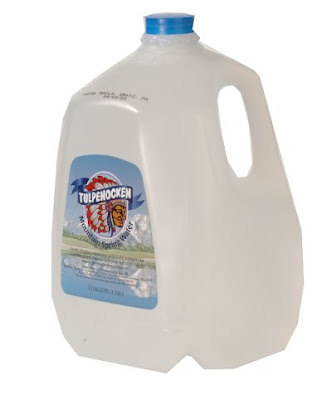
The average bathtub is between 40 gallons and 60 gallons which equates to about 151 to 227 liters in the metric system. Pictured below is a 40 gallon (151.42 liter) bathtub. The water in a 40 gallon bathtub weighs 333.82 pounds or 151.73 kilograms (2.2 kilograms per pound).
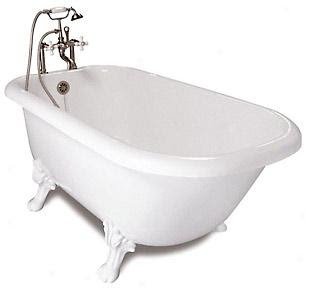
The average below ground swimming pool for a house takes between 18,000 and 20,000 gallons to fill (68,137.41 to 75,708.24 liters). Of course this is just an average as there are very large and very small pools. The weight of water in the average swimming pool ranges from 150,217.3 pounds to 166,908.1 pounds (68,280.58 kilograms to 75,867.31).
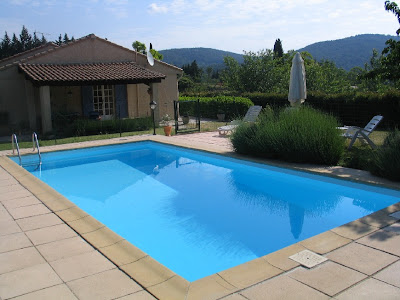
An Olympic sized swimming pool is of course much larger and comes in at around an astounding 660,000 gallons of water. The equivalent of close to 2.5 million (2,498,372) liters comes out to a hefty 5.5 million (5,507,966.64) pounds or 2.5 million (2,503,621.2) kilograms.
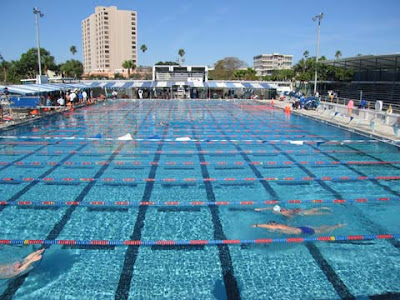
One last point that remains to be addressed is exactly what the weight of the water in that water cooler mentioned at the top of this page tips the scales at. The standard home or office water cooler uses a uniform five gallon jug. Based on 3.785412 liters per gallon we can say that the water cooler jugs hold five gallons or 18.93 liters. Using the blue and gray weight of water chart above we can calculate that those five gallons (18.93 liters) weigh 41.73 pounds or 18.97 kilograms in the metric system.
The next time you're laboring to hoist up a a five gallon jug onto the top of a water cooler don't feel so bad now that you realize you're lifting more than 40 pounds and controlling the shifting weight in a manner that allows you to control where it's placed with (hopefully) minimal spillage.
